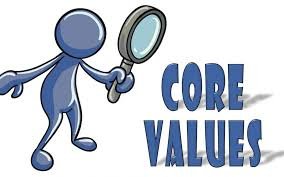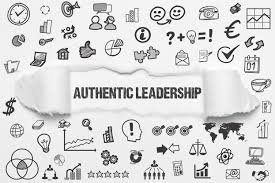When somebody is experiencing burnout, we assume that it is an individual issue, and that if they would adjust their habits and figure out how to get a better handle on their work, their problems would be solved. While there are changes that an individual can make, it is only a tiny part of the problem. The other part relates to challenges in the system and the environment, and companies are responsible for making alterations to better set people up for success. We miss the mark when we focus on the problem as one for individuals to solve.
While burnout prevention is always ideal (see blog series on having a strong personal management energy system), if you feel like you are experiencing burnout, there are many things you and your company can do to intervene and change course.
Here are some remedies to consider for both the individual and the company:
1. Reduce Workload.
1A. Communicate your limits. How can you communicate your capacity to your managers and aim to handle a reasonable amount of work? If you have always handled ten things on your plate, your boss may believe that is your comfortable capacity, but if it is really five, you need to communicate that and figure out a plan to keep it within a manageable amount.
1B. Increase resources and support. How can you access new resources or additional support to help manage your work? Maybe peers are searching for a stretch assignment who would be more than willing to help. A project may be stalled on another team, and some team members are currently underutilized, they can be transferred to another team to pitch in temporarily and gain valuable experience.
1C. Delegate effectively. How can you enlist the help of your team so you are not doing it all? Who on your team would jump at the opportunity to grow their leadership and responsibility and expand their scope? Hoarding work for yourself deprives others of expanding their range and visibility.
1D. Prioritize effectively. Are you always working on the most important goals and tasks agreed upon by your manager and team? Some people gravitate towards working on enjoyable, unimportant, and urgent work that steals a lot of their time, but it is the vital work that needs to be prioritized first. What is your system of saying no to projects so you can keep your focus on the top 3 priorities?
1E. Be comfortable with some incompletions. Not everything has to get done at the moment. And sometimes, after a scan of all the work you have to do, you can make strategic choices on what you will not do because it is less critical. I remember my university days when my professors would give me more reading than I could ever do before my next class. I would devise techniques to read the two most important articles and skim the others to extrapolate 2-3 main points. Being effective with this approach means that you accept and come to peace that it is not worth getting it all done. Getting to inbox 0 may not be serving you; instead, leaving unimportant emails and feeling no responsibility to respond is more important, especially regarding cold calls or distant connections to try to take your time but you don’t owe them anything. Some strategies that may have worked for you previously may not be working now so there is a real need to update our operating systems.
2. Create a coverage plan for your team. If you have an eight-person team and some people are getting routinely sick, which was the case during Covid peaks, what is your plan for how a four-person team handles the work of 8? It can be exhausting for people who already feel at capacity to assume an additional load. We sometimes do this for leaves of absence; we create a transition plan and get temporary replacements. It can be helpful to prepare in advance the plans to handle certain situations for when people are out. Maybe one person jumps in to help for a week, and then they get rotated out for the next person to assume the tasks for the next week. There may be some standbys or a temp agency to enlist to deal with the extra work. Thinking through these thorny challenges will create a sense of ease for your team, and make it so no one ever has to shoulder the burden and feel like they are always covering and doing overtime.
2. Increase control. Where can you have more agency in your work to increase your quality of work-life? Conducting employee surveys to learn where people want more autonomy over when, how, and with whom they do their work as long as they meet key deliverables can be insightful. It can be worth it to invest in slight changes that translate to a massive increase in happiness.
3. Rewards. Regularly recognizing people for a job well done is vital. You can do a kudos board or something highlighting others’ important work and spread the acknowledgment. For more ideas, you can read here. The goal is to inspire and encourage each other.
4. Community. What are you doing to intentionally build a community where people feel connected to each other? A good way to do this is to let people know you have heard them. Too often, companies will send surveys to get people’s ideas on improving culture, engagement, and community, and people take time to complete the questionnaires and never hear anything. A way to let people know you heard them is to report back on the survey data and share what you learned. You do not have to share only where there is an agreement, and you can even present conflicting information, but it is most important to convey what you have done with the information and identify the changes you plan to make because it fully honors people’s contributions. You can read about other ways to build community here.
5. Ensure fairness. How fair are your systems and processes? How do people get rewarded and promoted? How fairly are colleagues treated? It can be helpful to survey your employees to get their perceptions and audit your processes so you can get input into improving your processes and workstreams.
To create psychologically safe environments and ensure fairness is to have a process where turn-taking at meetings is common so everybody gets a say. Each person can speak for 30 seconds in a go-around. There can also be processes for healthy dissent.
6. Meaning, purpose, contribution. Managers talk with their Direct Reports to learn about their values and how they see them connecting or deviating from their work. It makes a difference if managers can make little tweaks so people are operating more from their strengths or zone of genius. Research shows if you spend just 20% of your time doing what you love, the other 80% will not burn you out. When you spend time thinking about work utilizing a creative and problem-solving approach, you get a wave of positive emotions and none of the burnout symptoms that induce stress or disrupt mood. People desperately want to experience mastery, progression, impact, and contribute, and when they can, their work becomes fulfilling and energizing. When they cannot, their work becomes tiring and exhausting. Some job functions are more conducive to burnout because they are not connected to a more profound mission. If they align their personal mission with the leadership agenda, that can make a big difference in energy levels.
Burnout and Business Impact
Burnout is not an individual problem, it is a collective challenge, and beyond investing in others because it is the right thing to do, there is a clear business case. When CEOs do not care for their employees, attrition grows, recruitment becomes harder, and customer success can be more difficult to achieve with unhappy employees. Wellbeing is not a warm and fuzzy option, it is an essential business metric.
Other things companies can do:
1. Reduce meetings, especially virtually. We spend an excessive amount of time in meetings, especially when most things do not have to be a meeting, they can just be an email. This means we are sitting way more than we have to, likely too close to our computers and experiencing screen fatigue. It also means we do not have time to do deep work, strategize, innovate, or be intentional about developing ourselves and others. Carving this type of time can be an energizing experience. And if meetings must be had, there is no reason to default to 1 hour. Making meetings 50 minutes or 25 minutes and allowing 5-10 minutes for people to pause, take time to consolidate the learnings from the previous meetings and crystalize their action steps, and then think about what they want to do for the next meeting will allow them to be more centered and productive. These micro-breaks are essential to our wellbeing.
2. Corporate wellness programs. There are the standard things we see companies do, unlimited time off, meditation and yoga classes, and gym memberships, which can be helpful, but if they are mainly used as coping devices and are not contributing to prevention, then it is insufficient. Amazon was criticized for installing a Zen booth mediation kiosk in its warehouses without really doing anything else to change the working conditions that were so challenging for people. If the job design is stress-filled, doing some of these things is not enough to alter the burnout conditions.
Some more valuable approaches involve giving everybody in the company (or in shifts based on teams) the same week off for vacation so you are not missing out on anything and returning to a mountain of work. Unfortunately, just having an unlimited time off policy is insufficient and often backfires because most people do not capitalize on it, and worst yet, some managers make others feel guilty for taking that time off. Flexible schedules allow people to choose where they want to work and when they want to work as long as they get results done. Some companies have 4 day-work weeks or no meeting Fridays to prioritize space for reflection, creativity, sense-making, and other valuable work. Incentivizing employees to get a good night’s rest, eat healthy, and utilize time for relaxing can also be helpful. Companies can monitor absentee rates, check in with others who are not taking any time off or taking too much time off, and have conversations supporting their needs. The Boston Group flags employees who work too many hours. Google’s 20% time allows people to pursue passion projects, flex their creative muscles, and expand their skillsets. In 2013, Salesforce offered a wellness benefit of 48 hours of paid volunteer work, which can energize and revitalize others’ experiences.
There is no one-size-fits-all, and what would work for one company differs from what works for another. The worst thing a company can do is to put a blanket policy. The key is to survey the employees to see what they want that will matter to them. It usually never works out when upper management comes up with a solution, such as putting a volleyball court on the roof of a building, thinking it will solve all issues.
3. Providing coaching. Many companies provide Executive and leadership coaching to their employees as a way to invest in their growth and development and advance their careers. Having a coach dedicated to your agenda and a safe space where you can talk about all your career aspirations and worries and devise a plan to move forward can be instrumental to your engagement.
4. Teams and managers can discuss wellness as a priority. People do not want to work at places where they are not honoring and respecting their wellbeing.
4A Managers can integrate wellness into their check-ins and teams can include it as a topic of discussion to learn how people organize their lifestyle to enable wellness. They can provide resources that promote wellbeing, such as nutrition services, gym membership, sleep information, therapists, and other support systems. You can encourage your people to monitor for signs of burnout regularly by having quick check-ins where they indicate how they are doing with the colors red (drowning), yellow (ok, but if not checked, heading to red), and green (thriving). The quicker you can identify somebody in yellow, you can intervene and find a way to get you back in the green. The cure for burnout is not just self-care; it’s also about caring for each other. When a manager takes a coach approach to learn more about people’s potential stressors, they may learn about minor quality-of-life issues that can be changed for the better. Maybe you find out that a big part of a teacher’s stress is having three different classrooms on three different floors, and they feel like they are driving themselves crazy remembering to carry all their items to teach their classes or the nurse who has vital equipment on one floor but mainly does her job on another floor and simply moving it would help her work dramatically. It is like having a pebble in your shoes, it’s annoying, and we feel it all the time, so when we can finally remove it, our quality of life improves. When managers can support the person to think about how to address it together because it is more of a “we” challenge than a “me” challenge, it can make a big difference. Discussing common causes of burnout and mentioning ways to address it can go a long way.
4B. Creating manuals of me. Ask people how they like to collaborate to work better. A significant source of our stress and cynicism is dealing with harmful and unhelpful interpersonal relationships, and if there are things we can discuss and fix, that can be helpful. Some companies, such as Deloitte, have created “manuals of me,” which build a process to learn how people best operate. The idea is once you put together how you best work and exchange it with others, it can accelerate communication and collaboration and reduce friction in trying to understand and guess the working style of others. Some topics to include:
· Things you need to know about me are
· Things that prevent me from doing my best are
· The best way you can check in on me is
· When I’m dealing with stress, I
· My best working patterns look like
· The one thing I need every day to keep me grounded is
· Taking care of my health and wellbeing looks like
4C. Respecting team boundaries. Once you know more about the people you work with, respecting their boundaries and supporting their goals are important. You can also be more mindful of not scheduling meetings during people’s lunch hours and, as a general rule, respecting other people’s calendar blocks designated as busy. If you know your coworker needs to go to the gym by six and they are still at their desk, you can inquire and see if support can be offered.
4D. Open conversations on personal growth. Having personal development conversations with each other on things we are doing to maintain our flourishment can be educational for others. You can also have conversations on resilience and best practices to alleviate stress so you do not feel like you are solving this all by yourself, especially when it is common for others to be going through it.
5. Create a burnout plan. When you are feeling stressed, you should have a list of micro initiatives you can take to help you regroup before you make your next move. Box breathing for 30 seconds, going on vacation, and spending time with friends and family can make a difference.
When you are feeling burned out, there are many things you and your company can do to change the environment that reduces the exhaustion and sets you up for thriving.
Quote of the day: “If we cannot disconnect, we cannot lead.” -Arianna Huffington.
Q: What does your company do to address burnout? Comment and share below; we would love to hear from you!
“Burnout is nature’s way of telling you you’ve been going through the motions your soul has departed.” — Sam Keen.
As a leadership development and executive coach, I work with leaders and their teams to prevent and manage burnout so they can do their best work, contact me to explore this topic further.






















